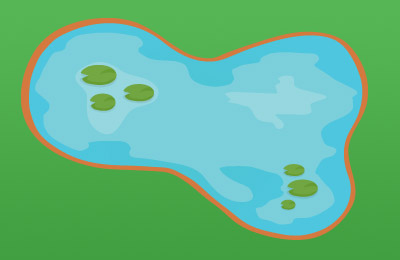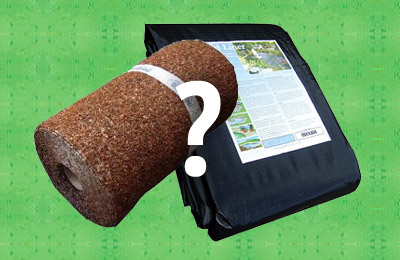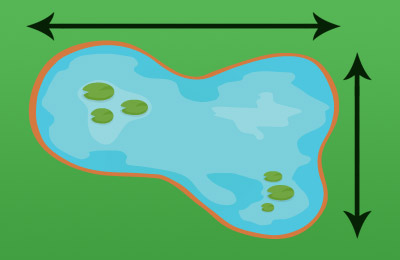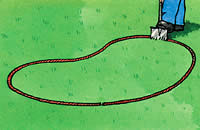
1. Lay out shape
The easiest way to determine the size and shape of your pond is to lay out the shape on the ground using a length of rope or hosepipe.
Try to position the pond so it is sheltered from cold prevailing winds and receives sunlight for at least half the day. Where possible avoid overhanging trees as their leaves and blossom will fall into the pond.
Also avoid areas where surface water tends to collect, or areas with a high water table as this could push up under the pond liner and create problems.
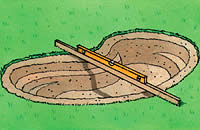
2. Level off
Dig the pond or water garden to the desired shape taking care to make the sides sloping rather than vertical, the shape is down to personal preference but it is always best to create a shape that allows natural flow of water.
Avoid complex shapes, as this can lead to construction difficulties. To create areas for marginal plants leave steps from 20cm to 40cm deep. For a perfect finish ensure that the top edge of the pond is level.
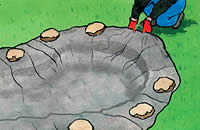
3. Lay down the underlay and pond liner
Once the pond is dug and all sharp stones have been removed, place underlay on the base and sides of the excavation and place the liner in position.
Should you need to tread on the liner be sure to remove shoes to avoid piercing.
Anchor liner in position with bricks around the edge of the liner, not the excavation.
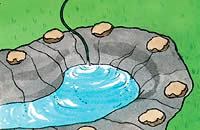
4. Add water
Run water into the pond gradually, at the same time pulling and tucking the liner into shape to ensure a neat finish. Fill the pond completely and leave overnight to ensure proper settlement.
Trim off excess pond liner and underlay, leaving a minimum of 30cm overlap for anchorage.
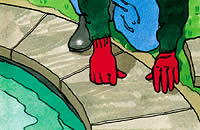
5. Finish with edging
Complete your pond by adding edging in stone or paving as desired, make sure you allow a small overhang to protect any exposed liner from direct sunlight.
If you prefer you can use grass turf, which may overhang and touch the water.
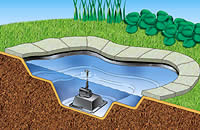
6. Add equipment
Your pond is now ready, it's time to add your pump, filter, plants, fish, lighting and anything else.
Take advantage of our knowledge and experience and you'll soon be enjoying the benefits of your own pond. If you need any help or further information please contact us.
What about the pond depth?
If you're keeping Koi then the pond should be at least 1.2 metres deep, and for other fish the pond should be 1 metre deep. Some fish, such as goldfish, shubunkins and sarasa comets can sometimes survive in sheltered smaller ponds with a mimimum depth of 50cm. These depths allow the fish to survive over winter in the deepest part of the pond where the water is warmest. At least 40% of the pond area should be kept at this maximum depth.
